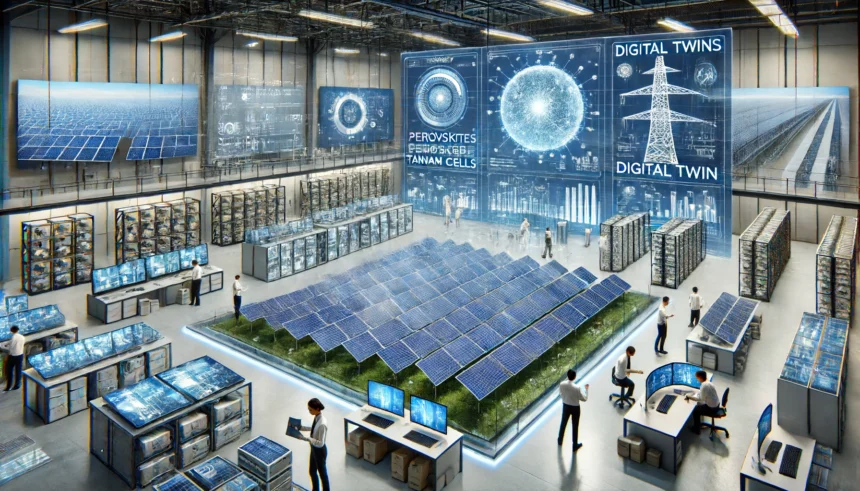Solar energy is rapidly evolving, promising a bright future powered by sustainable technology. Innovations like perovskites and digital twins are pushing the boundaries of what’s possible, but challenges such as energy storage, grid integration, and policy still need to be addressed. Let’s dive into the exciting advancements in solar power and how they are shaping our energy future.
Key Takeaways:
- Innovation in Materials: From silicon to perovskites, the materials used in solar cells are evolving, improving efficiency and reducing costs.
- Advanced Technologies: Tandem cells, bifacial panels, and BIPV are pushing the boundaries of what’s possible with solar energy.
- Digital Transformation: Automation, AI, and digital twins are revolutionizing solar manufacturing and maintenance.
The Evolution of Solar Cells
1. First-Generation Solar Cells
- Silicon-Based Dominance: The market has long been dominated by silicon-based solar cells due to their high efficiency and stability. However, the high cost of silicon and the demand for more efficient energy conversion have prompted the search for alternative materials.
2. Second-Generation Solar Cells
- Thin-Film Technologies: These cells, made by depositing photovoltaic materials on a substrate, offer lower production costs, flexibility, and lighter weight. Common materials include cadmium telluride (CdTe) and copper indium gallium selenide (CIGS). Recent advancements have improved their efficiency, making them competitive with traditional silicon cells.
3. Third-Generation Solar Cells
- Perovskite Solar Cells: Known for their distinctive crystal structure, perovskite cells have shown rapid efficiency improvements, reaching over 25% in labs. They are attractive due to low material costs, easy fabrication, and versatility in applications.
- Organic Photovoltaics (OPVs): Using organic molecules or polymers, OPVs are lightweight and flexible. Although they currently have lower efficiency, ongoing research aims to enhance their stability and efficiency, making them a potential low-cost option.
Cutting-Edge Photovoltaic Technologies
1. Tandem Solar Cells
- Stacked Efficiency: By layering multiple solar cells to capture different segments of the solar spectrum, tandem cells achieve higher efficiencies. For example, combining perovskite and silicon layers has produced cells with over 29% efficiency.
2. Bifacial Solar Panels
- Dual-Sided Capture: These panels capture sunlight from both sides, increasing energy yield by 10-20% compared to traditional panels. They are especially effective in high-albedo environments where the ground reflects significant sunlight.
3. Building-Integrated Photovoltaics (BIPV)
- Seamless Integration: BIPV integrates photovoltaic materials into building components like windows and roofs, generating electricity while maintaining aesthetic appeal. This approach is gaining popularity in urban areas, blending power generation with architectural design.
The Role of Advanced Manufacturing and Digitalization
1. Automation and AI in Solar Manufacturing
- Enhanced Precision: Automation and AI have improved the precision and reduced the costs of solar cell production. Automated systems handle complex tasks with greater accuracy, reducing defects and enhancing quality. AI algorithms optimize design and predict performance, ensuring high standards.
2. Digital Twins and Predictive Maintenance
- Virtual Replicas: Digital twins create virtual models of solar power systems, enabling predictive maintenance. By simulating real-world performance, they help operators identify and address issues proactively, enhancing reliability and efficiency.
Overcoming Challenges for a Sustainable Future
While the technological advancements are promising, addressing challenges like energy storage, grid integration, and supportive policies is crucial. As solar technology continues to evolve, it is poised to play a vital role in the global transition to a sustainable and resilient energy future.
















